Does anyone actually watch cable TV anymore?
Nobody has the patience for ads anymore.
On a macro-scale, society’s mindset of wanting things in an instant with little-to-no patience is revealing itself in so many different ways.
Traditional cable television has been on its way out for years now, and as the incoming generations continue to get older, live TV ratings are could continue to drop. Streaming platforms such as Netflix, Hulu, and HBO Max have become extremely popular and preferable amongst newer generations for a variety of reasons.
According to Nielsen, streaming platforms have surpassed cable TV ratings for the first time in history.
Nielsen is an information, data, and market measurement firm that provides analytics.
Nielsen attempts to provide its clients with valuable insights into consumer behavior and marketing information by collecting data that measures what consumers watch and what they buy.
A report by Horowitz Research analyzed Gen Z’s media habits in the United States between the ages 13-24 involving social media, music streaming, and short-form content usage.
91% of Gen Z use their smartphone every day or almost every day
66% or two-thirds of Gen Z uses a TV every day or almost every day.
60% of Gen Zers have a TV in their room, according to the study.
The study found that this age group views long-form TV content with as much frequency as short-form video content.
78% of those between the ages of 13-24 stream TV shows, movies, sports, etc.
It found that eight in ten (78%) 13- to 24-year-olds stream TV content (TV shows, movies, sports, etc.) weekly, while 79% stream short-form content (short clips, user-generated content, video game live streams, videos on social media, etc.).
Gen Z uses an average of 5.5 different streaming platforms, with Netflix being the most popular.
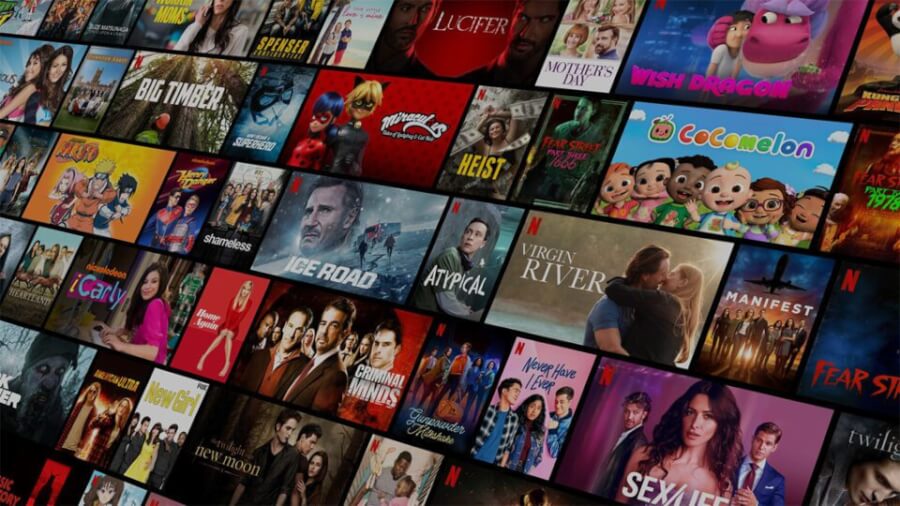
Netflix is the most popular streaming service with 78% of Gen Z streaming daily.
HBO Max, Disney+, Hulu, and Amazon Prime Video are also heavily used, as are free services like YouTube (for TV content) and Roku.
The most popular TV genres for Gen Z include movies, animated series/cartoons, dramas, and anime.
55% of Gen Z watches “at least some” live TV every week, the report found.
While streaming platforms have taken the crown for the most popular mode of media consumption, live television remains somewhat popular.
When it comes to business, marketers should still consider live television as a means of advertising, according to Adriana Waterson, the Chief Revenue Officer, and Insights & Strategy Lead at Horowitz Research.
She says, “It’s important for marketers to keep in mind that media consumption among Gen Z is not about absolutes; it’s not true that they ‘never’ watch long-form TV content, that they ‘never’ use a screen other than their phones, or that they ‘never’ watch live TV.”
“Understanding that there are nuances of Gen Z’s media habits gives marketers and media brands the opportunity to increase engagement and create unique experiences for this generation of digital natives across multiple platforms and through a variety of formats.”
“While the platforms and technologies they have are different, we all share the desire to sit back at times and be drawn into compelling, high-quality long-form entertainment.”
With the slowdown of new content on traditional television and reduced sports programming, streaming claimed the largest share of TV viewing in July—a first after four consecutive months of hitting new viewership highs.
Streaming viewership in a given month has exceeded broadcast viewing before, but this is the first time it has also surpassed cable viewing.
In addition to claiming the largest viewership share during the month, audiences watched an average of 190.9 billion minutes of streamed content per week—easily surpassing the 169.9 billion minutes that audiences watched during the pandemic lockdown period back in April 2020.
Excluding the week of Dec. 27, 2021, the five weeks of July 2022 represent the highest-volume streaming weeks on record, according to Nielsen.
Overall, streaming usage grew by 3.2% since June.
On a year-over-year basis, streaming volume increased 22.6%, growing its share of usage by 6.5 points.
In July, Prime Video, Hulu, Netflix, and YouTube reached new records for viewership.
Netflix gained an 8% share, boosted by the nearly 18 billion minutes of Stranger Things that viewers streamed. An additional 11 billion minutes of Virgin River and The Umbrella Academy were consumed by viewers.
The films The Gray Man and The Sea Beast contributed over 5 billion minutes.
Broadcast, at 21.6% share of television, was down 3.7% in volume compared to last month, representing a 0.8 share point dip.
On a year-over-year basis, the changes in viewing behavior are more evident, with broadcast viewing dropping by 9.8% for a loss of 2.3 share points.
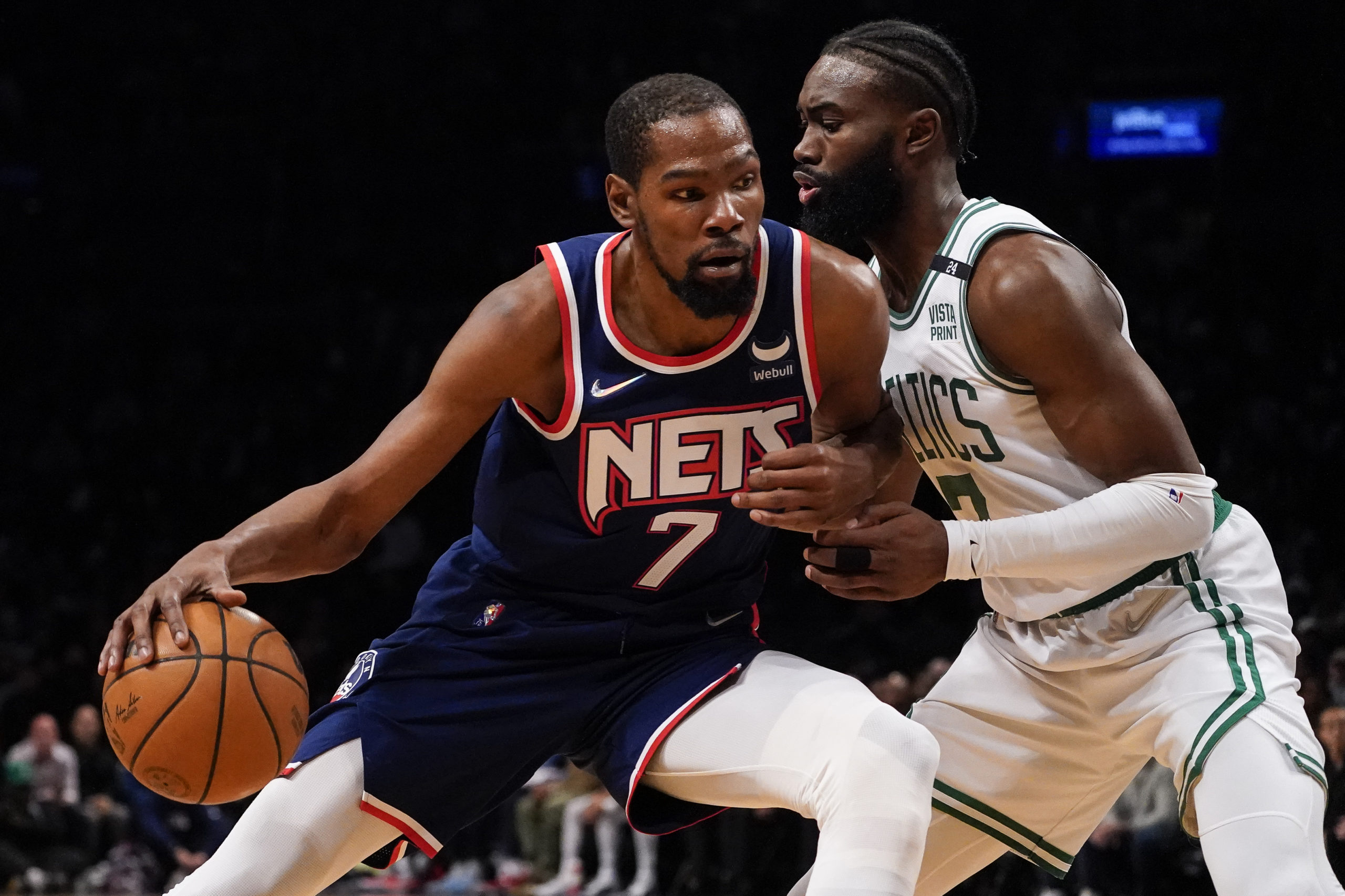
After the NHL and NBA playoffs in June, the 41% drop in sports viewing was a variable to the decrease in numbers.
Compared to last year when there was some Olympics content in addition to NHL and NBA, the drop was 43%.
From June 2022, cable usage dropped 2%, resulting in a loss of 0.7 share points. From last July, cable usage was down 8.9% and 3.3 share points. Engagement with cable genres was fairly flat in July, with sports posting the biggest decline—dropping 15.4% for the month and 34% from a year ago.
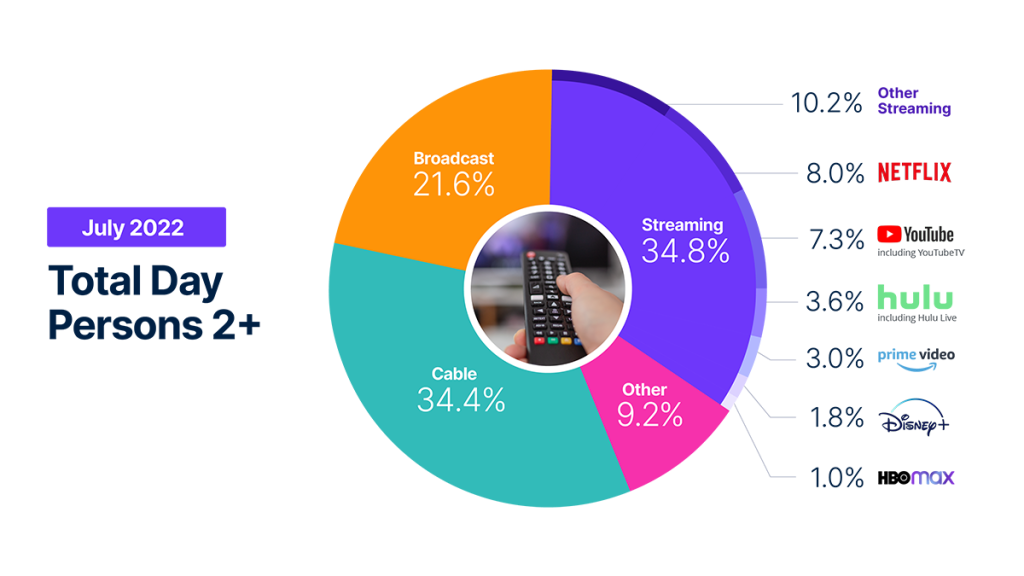

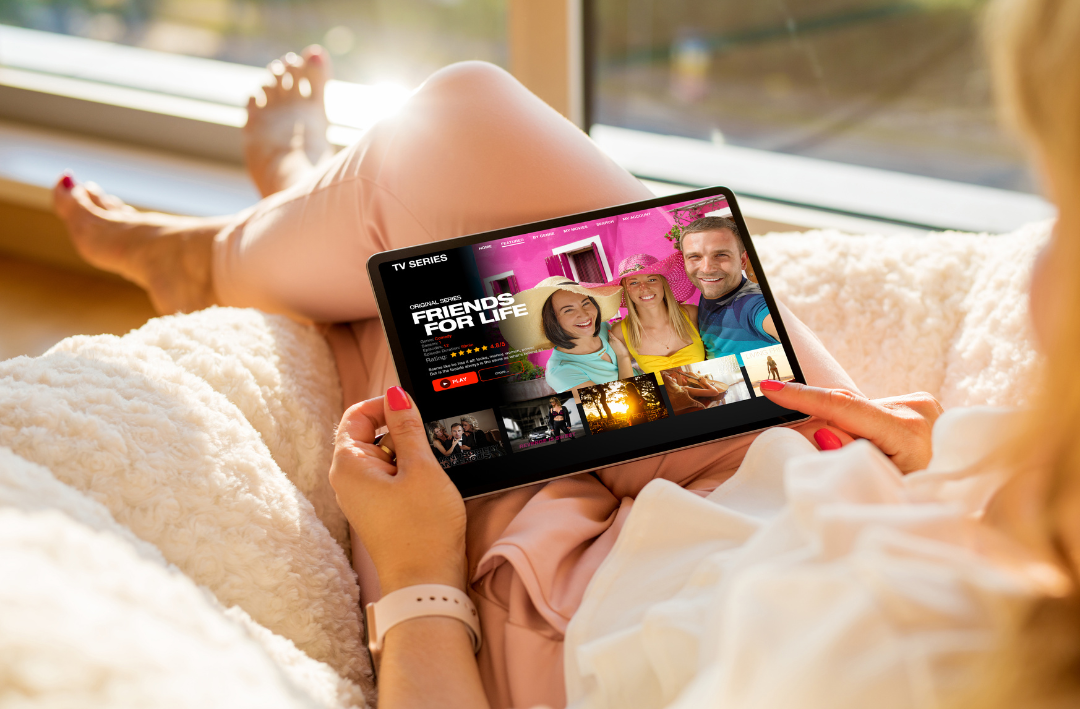
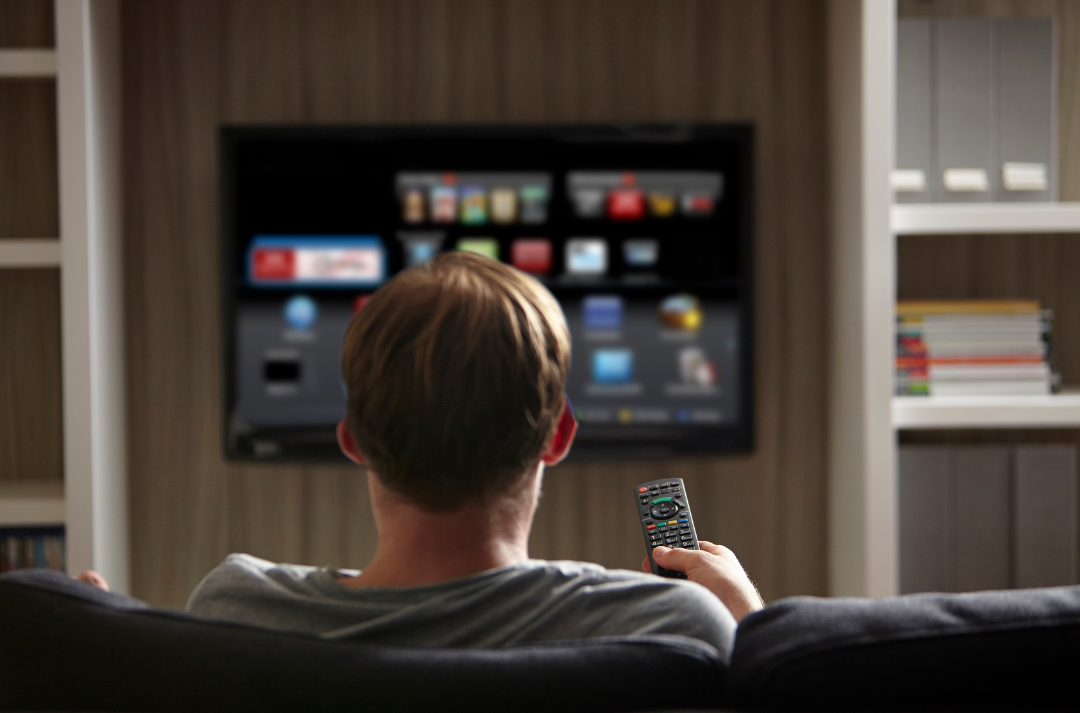


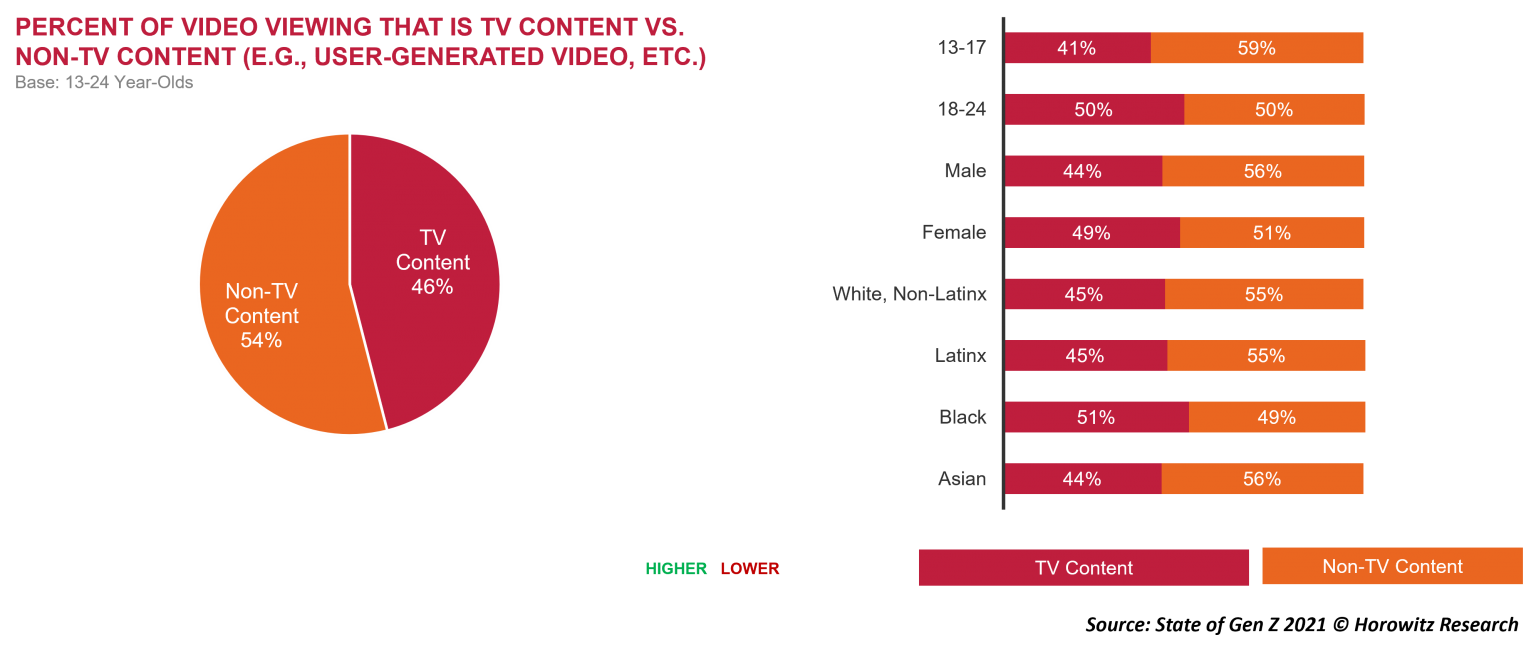

















Add comment